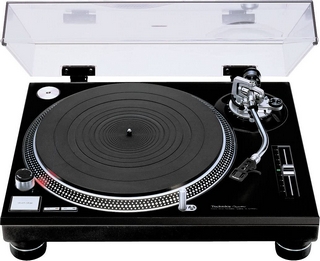Ciao, se tu avessi voglia di calcolare la massa effettiva del tuo braccio, questo è un modo (valido specialmente per bracci dritit, ma si può usare anche con bracci ad S):
quote
"I used missan's method to find the mass of the cartridge side of the tonearm. Then used I = m*(L^2)/3 to determine the MOI of that side of the arm, the RB250 being a straight tube (approx). (ed: MOI is Moment Of Inertia)
Then worked out the effective mass of my RB250, as per the original post, and obtained a new answer, 11.1g. Published figure is usually 12g, sometimes 11g. So that's a good result - thanks guys !
So here's a (revised) method for measuring the effective mass of a tonearm. Good for tonearms that are straight, short stub, constant mass/unit length (like a non-tapered tube), and where the headshell mass is light (about the same mass/unit length as the arm - see notes below).
Principle: To measure actual tonearm effective mass, all one needs to do is determine the moment of inertia of the tonearm about the pivot, then calculate the equivalent mass required at the effective tonearm length to provide the same moment of inertia, and that mass is then the effective mass of the tonearm.
Step1 The tonearm is a lever balanced about the pivot. The vast majority of mass on one side of the lever is a lump mass in the form of the counterweight. So weigh the counterweight (mass m [kg]) measure the distance from the centre of the balanced counterweight to the pivot with a ruler (r [m]), and then calculate the moment of inertia from I=m*r^2 [kgm^2]
Step2 To evaluate MOI of the cartridge side of the tonearm, remove the counterbalance and cartridge (inc mountings), then use a weighing scale to measure the weight W of the tonearm at the headshell end, with the tonearm parallel to the platter. W is half the weight of the cartridge side of the tonearm (less a small bit for the stub - ignore), so the mass Z of the cartridge side of the tonearm Z = 2*W (kgf), and since it is vertical Z is also the mass in kg. The effective length L can either be measured (between stylus tip and pivot) or looked up from published figures for the tonearm. Then calculate the moment of inertia from I = Z*(L^2)/3 [kgm^2]
Step 3 Calculate the total moment of inertia I(tot)
I(tot) = [m*(r^2)] + [Z*(L^2)/3] kgm^2
Then effective mass M at effective length L is given by
M*L^2 = [m*(r^2)] + [Z*(L^2)/3] kgm^2
So M = ([m*(r^2)] + [Z*(L^2)/3])/(L^2) kg
which reduces to
M = [m*(r^2/L^2)] + [Z/3] kg
In itself, this is an interesting result. It shows the contribution to effective mass from each side of the tonearm, mostly it comes from the cartridge side. It shows what to vary if one seeks to increase/decrease effective mass, principally the mass of the cartridge side of the tonearm, Z. But some influence is also possible from a heavier counterweight, and in a non-intuitive direction perhaps (heavier = lower M because balancing distance r influences M as power of 2).
For S shaped tonearms, would need to evaluate the MOI differently. Same for tapering mass/length arms. For tubular arms with detachable headshells, MOI of arm and headshell can be evaluated separately and added together, that is a principle of MOI, contributions of coupled parts can simply be added. The stub is relatively low mass and close to the pivot. One could correct it, but I think it only makes a few % difference and is OK to ignore. All of these measurements/ calcs are just for tonearm, no cartridge or fixtures fitted. Add the cartridge/fixture mass in the normal way to obtain total effective mass.
Thanks again, guys. Comments?
Hi Red_One, yes ^2 means squared, raised to the power of 2, and kgf is just a way of distinguishing between weight and mass.......1kgf = 1kg weight effectively, and kgm^2 is the unit kilogram*metressquared, which is the unit of I, the moment of inertia, useful in rotational physics, and there is a standard moment of inertia for a straight rod of length L and uniform mass per unit length total mass Z, I =Z*(L^2)/3 which someone derived long ago to save those of us who've already had a new year's eve drink from the embarrassment of doing calculus to prove HTH, happy new year , and any q's just ask







